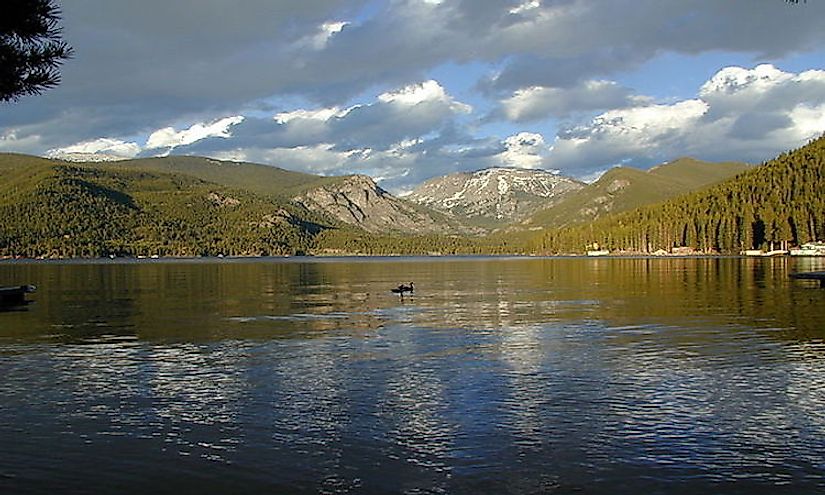The Biggest Lakes in Colorado

Location And Characteristics Of The Biggest Lake In Colorado
Grand Lake is the biggest and deepest lake in Colorado with a surface area of 507 acres. It is located in Grand County, Colorado, 1 mile from the Rocky Mountain National Park, at an altitude of 8,366 feet. The shorelines surrounding the lake run approximately 4 miles in length. Its source waters flow out of the National Park from the North and East Inlets. This glacial lake forms the headwaters of the Colorado River.
History Of The Grand Lake
The lake was formed by melting Rocky Mountains glaciers around 12,000 years ago. From prehistoric times until the arrival of European settlers, Native American peoples migrated to the waters each summer to fish and hunt. Grand Lake was such an important part of their society that the people of the Ute tribe even believed spirits from the dead inhabited its waters. By the mid-1800’s, Europeans had made their way to the area, setting up permanent camps, mining silver, and trapping furs. As word spread of the resource richness surrounding the lake, the permanent population grew and Grand Lake City was established.
Developmental Projects
Grand Lake is part of the Colorado-Big Thompson Project, a water diversion project. Its purpose is to provide water to the Front Range and plains area by collecting Colorado River headwaters on the West Slope and diverting the waters to the East Slope. This project was created because 80% of the state’s population lives on the East Slope, but 80% of its precipitation falls on the West Slope. To achieve this diversion, water is pumped from two connecting reservoirs back into Grand Lake. From there, the water travels via an underground tunnel, the Alva B. Adams Tunnel, into the Big Thompson River on the other side of the mountains.
Changing Lake Environment Of The Biggest Lake In Colorado
Several factors have contributed to the changing lake environment. Originally, cutthroat trout inhabited these waters before making their way to the Colorado River. Researchers believe these trout bred with rainbow trout, creating a hybrid species by the early 1900’s. Additionally, the local human population began introducing non-native fish to the waters to encourage fishing as a sporting activity. Some of these introduced fish species include kokanee salmon, rainbow trout, brown trout, and lake trout. In order to feed and promote population growth of these introduced fish species, Mysis shrimp were also released into the lake. Today, its aquatic life has changed due to these, and other, disruptions. The Mysis shrimp have reproduced rapidly, creating an overabundant population that competes with the fish for zooplankton, the basis of both species’ diets. Another factor that contributes to the changing lake environment is the previously mentioned Colorado-Big Thompson Project. This project has affected water clarity of the lake; by reversing the flow of water, the biological characteristics of the reservoirs are introduced to Grand Lake.
Tourism Activities
Today, the Grand Lake draws tourists from all over to enjoy its outdoor recreational activities. People come to fish, kayak, swim, and rent boats. The Grand Lake Yacht Club provides a dock for yacht owners and holds a Regatta week every August. The nearby town of Grand Lake also hosts events, including fireworks for the 4th of July. Tourism activities are not only limited to the summertime, however. Many people come to take advantage of ice fishing and nearby skiing during the winter.











